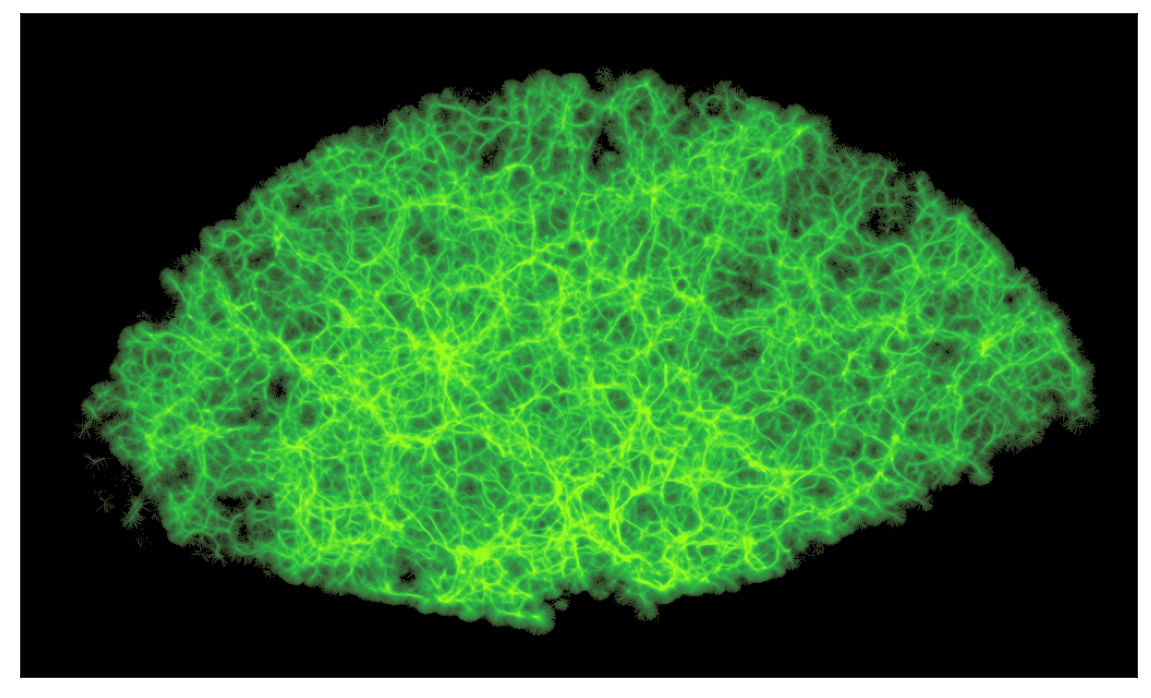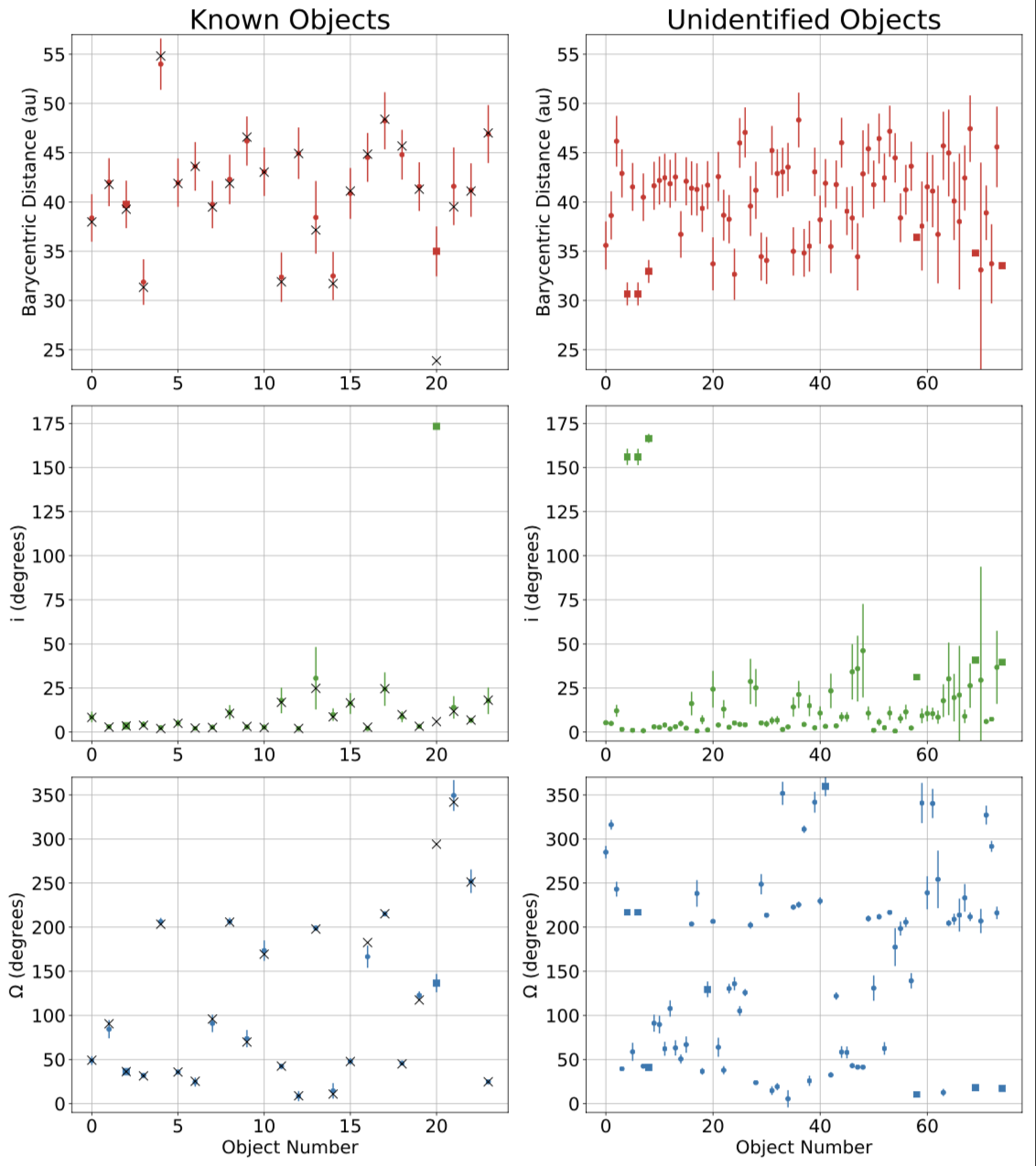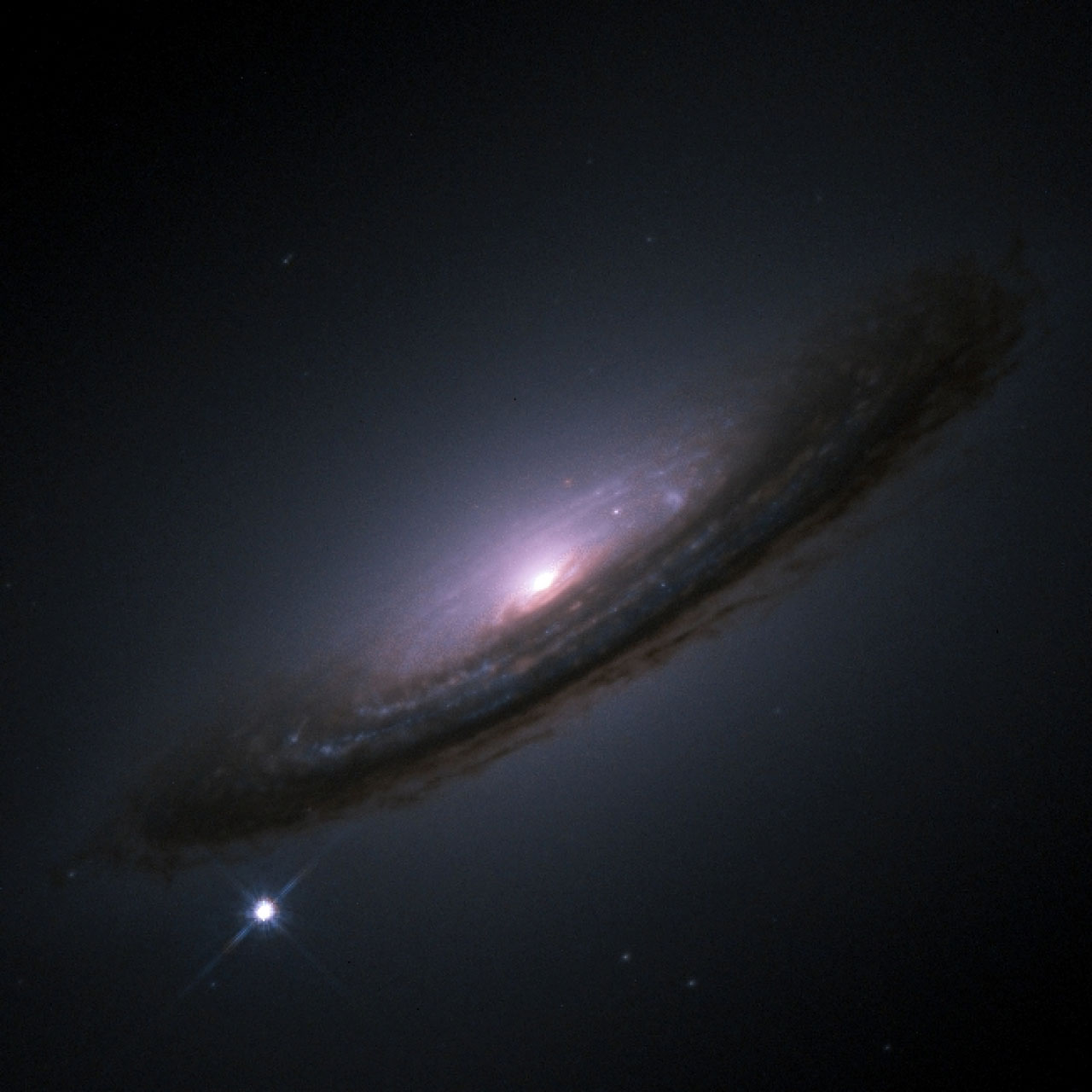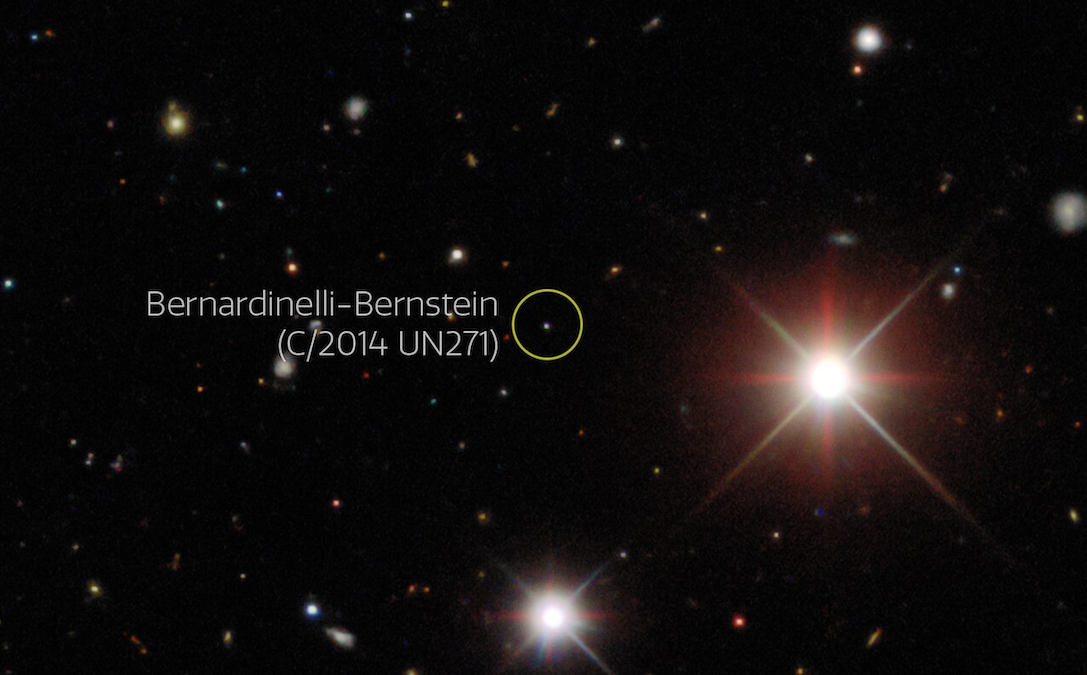
A tenet of modern cosmology is the existence of the “cosmic web”, a vast filamentary structure formed via the collapse of matter due to gravity. This structure is ubiquitous in cosmological simulations yet challenging to observe due to its diffuse nature.
Recently, a new technique was developed which is inspired by the growth and movement of Physarum polycephalum slime mold to map the cosmic web of a low redshift (z < 0.01) sub-sample of the SDSS spectroscopic galaxy catalog (Burchet et al. 2020, Elek et al. 2020). However, this limited volume limits the statistics and observational techniques that can be applied to this slime mold generated density field.
Matthew Wilde, UW graduate student, applied this algorithm to the classic SDSS and eBOSS surveys which expands the volume mapped to z < 0.5. The slime mold density map shown in the accompanying image was recently released as a value added catalog (VAC) and released by the SDSS DR17 team (Abdurro’uf et al. 2021, Wilde et al. in prep.), and will allow astronomers a new way to explore the cosmic web. Applications of this density map include constraining the role of environment on galaxy evolution and the role of galactic feedback, more efficient follow up observing strategies for gravitational wave targets, and interesting tests of cosmological constants and dark matter candidates.
SDSS DR17: https://www.sdss.org/dr17/data_access/value-added-catalogs/?vac_id=cosmic-web-environmental-densities-from-mcpm-slimemold

Trans-Neptunian objects provide a window into the history of the solar system, but they can be challenging to observe due to their distance from the Sun and relatively low brightness.
In the recently published paper, Sifting through the Static: Moving Object Detection in Difference Images, DiRAC researchers report the detection of 75 moving objects that could not be linked to any other known objects, the faintest of which has a VR magnitude of 25.02 ± 0.93 using the Kernel-Based Moving Object Detection (KBMOD) platform.
They recover an additional 24 sources with previously known orbits and place constraints on the barycentric distance, inclination, and longitude of ascending node of these objects. The unidentified objects have a median barycentric distance of 41.28 au, placing them in the outer solar system. The observed inclination and magnitude distribution of all detected objects is consistent with previously published KBO distributions. They describe extensions to KBMOD, including a robust percentile-based lightcurve filter, an in-line graphics-processing unit filter, new coadded stamp generation, and a convolutional neural network stamp filter, which allow KBMOD to take advantage of difference images.
These enhancements mark a significant improvement in the readiness of KBMOD for deployment on future big data surveys such as LSST.
ADS Published Paper, access here.

DiRAC researchers are heavily involved in building the Vera C. Rubin Observatory, a new facility that is currently under construction in Chile. This observatory will feature the 8.4 meter Simonyi Survey Telescope and the world’s largest CCD camera which will scan the entire visible sky every three nights. It will discover and observe millions of supernovae which are powerful explosions of stars that can outshine an entire galaxy for a brief period of time.
A particular type of supernovae called “Type Ia” can be used to map out how the universe has expanded since the big bang. This led to the discovery of dark energy which was awarded the Nobel Prize in 2011. The Rubin Observatory will discover over 100 times as many Type Ia supernovae then have been observed by all surveys to date and will dramatically improve our understanding of the universe.
Extracting scientific results from this large deluge of data is a big challenge. In his paper, DiRAC Fellow Kyle Boone discusses a new statistical model called ParSNIP that can be used to distinguish Type Ia supernovae from others and improve our maps of the universe. This novel work combines recent advances in computer science and deep learning with physics models of how light propagates through the universe. The resulting hybrid model is the first one that can empirically describe how the emitted light spectrum from any kind of supernova evolves over time.
This foundational work has many applications. ParSNIP will be used to identify the different kinds of supernovae that the Rubin Observatory finds, and it can do this with over twice the performance of previous models. It will also be used to hunt for new unknown kinds of supernovae in the large Rubin dataset. ParSNIP will use all of the millions of supernovae that the Rubin Observatory discovers to measure the properties of dark energy in contrast to current methods that can only use less than a tenth of the full sample. This work will transform supernova science with the Rubin Observatory and help to extract the full scientific potential.
About
Kyle Boone is DiRAC Postdoctoral Fellow. Kyle’s research focuses on developing novel statistical methods for astronomy and cosmology. He is particularly interested in using Type Ia supernovae to probe the accelerated expansion of the universe that we believe is due to some form of “dark energy”. One aspect of his research focuses on identifying Type Ia supernovae among the millions of astronomical transients that upcoming astronomical surveys such as the Large Synoptic Survey Telescope (LSST) will discover.
Read more here. GitHub here.
ADS library features recently published papers by DiRAC researchers.
Observations and computer simulations of their orbits and interactions with planets yield insights into the asteroids’ dynamic lives.
Sarah Greenstreet is a senior researcher with the B612 Asteroid Institute in Mill Valley, California, and a research scientist with the Dirac Institute at the University of Washington in Seattle.
In October 2023 a new telescope in Chile called the Vera C. Rubin Observatory will begin a 10-year survey of the entire overhead sky called the Legacy Survey of Space and Time (LSST). “Typical telescopes find objects out to 50 or 60 AU,” says LSST team member Mario Jurić of the University of Washington. “With LSST, we can easily go out to 150 AU. We’re going to see things like [the Bernardinelli-Bernstein comet] maybe on a monthly basis.”
A team led by Dr. James Davenport, research assistant professor of astronomy at the UW and associate director of the UW’s DIRAC Institute, analyzed more than 125 years of observations of HS Hydra – from astro-photographic plates in the late 1800s to 2019 observations by TESS – and showed how this system has changed dramatically over the course of just a few generations. The two stars began to eclipse in small amounts starting around a century ago, increasing to almost full eclipses by the 1960s. The degree of eclipsing then plummeted over the course of just a half century, and will cease around February 2021.
The sun is the only star in our system. But many of the points of light in our night sky are not as lonely. By some estimates, more than three-quarters of all stars exist as binaries — with one companion — or in even more complex relationships. Stars in close quarters can have dramatic impacts on their neighbors. They can strip material from one another, merge or twist each other’s movements through the cosmos.
And sometimes those changes unfold over the course of a few generations.
That is what a team of astronomers from the University of Washington, Western Washington University and the University of California, Irvine discovered when they analyzed more than 125 years of astronomical observations of a nearby stellar binary called HS Hydrae. This system is what’s known as an eclipsing binary: From Earth, the two stars appear to pass over one another — or eclipse one another — as they orbit a shared center of gravity. The eclipses cause the amount of light emitted by the binary to dim periodically.
Continue reading this article by James Urton in the UW press release here.
Published paper includes contribution from DiRAC Researchers: Graham Melissa, Connolly Andrew, Morrison Christopher B., Ivezić Željko, Daniel Scott, Jones R. Lynne, Jurić Mario, Yoachim Peter, Bryce Kalmbach J. Published Date: April 2020.
Abstract
Accurate photometric redshift (photo-zz) estimates are essential to the cosmological science goals of the Vera C. Rubin Observatory Legacy Survey of Space and Time (LSST). In this work we use simulated photometry for mock galaxy catalogs to explore how LSST photo-zz estimates can be improved by the addition of near-infrared (NIR) and/or ultraviolet (UV) photometry from the Euclid, WFIRST, and/or CASTOR space telescopes. Generally, we find that deeper optical photometry can reduce the standard deviation of the photo-zz estimates more than adding NIR or UV filters, but that additional filters are the only way to significantly lower the fraction of galaxies with catastrophically under- or over-estimated photo-zz. For Euclid, we find that the addition of JHJH 5σ5σ photometric detections can reduce the standard deviation for galaxies with z>1z>1 (z>0.3z>0.3) by ∼20%∼20% (∼10%∼10%), and the fraction of outliers by ∼40%∼40% (∼25%∼25%). For WFIRST, we show how the addition of deep YJHKYJHK photometry could reduce the standard deviation by ≳50%≳50% at z>1.5z>1.5 and drastically reduce the fraction of outliers to just ∼2%∼2% overall. For CASTOR, we find that the addition of its UVUV and uu-band photometry could reduce the standard deviation by ∼30%∼30% and the fraction of outliers by ∼50%∼50% for galaxies with z<0.5z<0.5. We also evaluate the photo-zz results within sky areas that overlap with both the NIR and UV surveys, and when spectroscopic training sets built from the surveys’ small-area deep fields are used.
Dr. Stephen Portillo, DiRAC Postdoctoral Fellow, coauthored paper “Photometric Biases in Modern Surveys” published in March 2020.
Many surveys use maximum-likelihood (ML) methods to fit models when extracting photometry from images. We show that these ML estimators systematically overestimate the flux as a function of the signal-to-noise ratio and the number of model parameters involved in the fit.
Paper published by DiRAC Researcher, Dr. Sarah Greenstreet. Dr. Greenstreet is a joint postdoctoral fellow with the Asteroid Institute, a program of B612, and the DiRAC Institute at the University of Washington. Her research interests include the study of orbital dynamics and impacts of small bodies in the Solar System.




